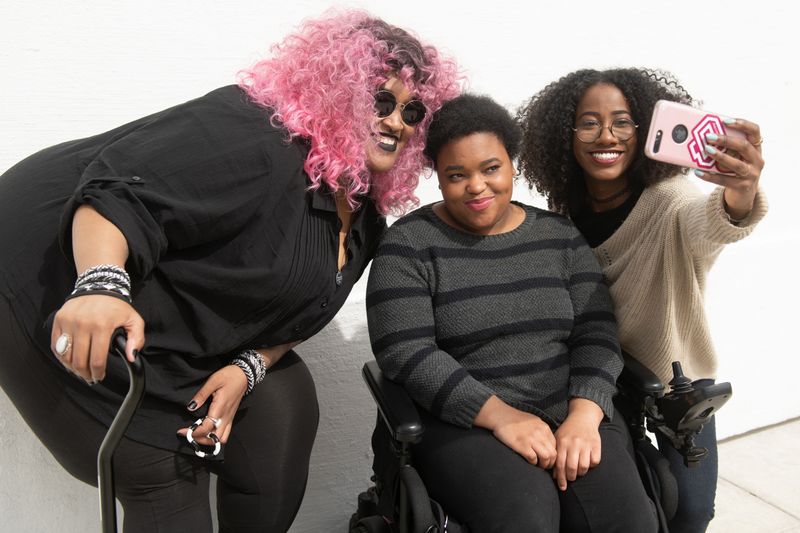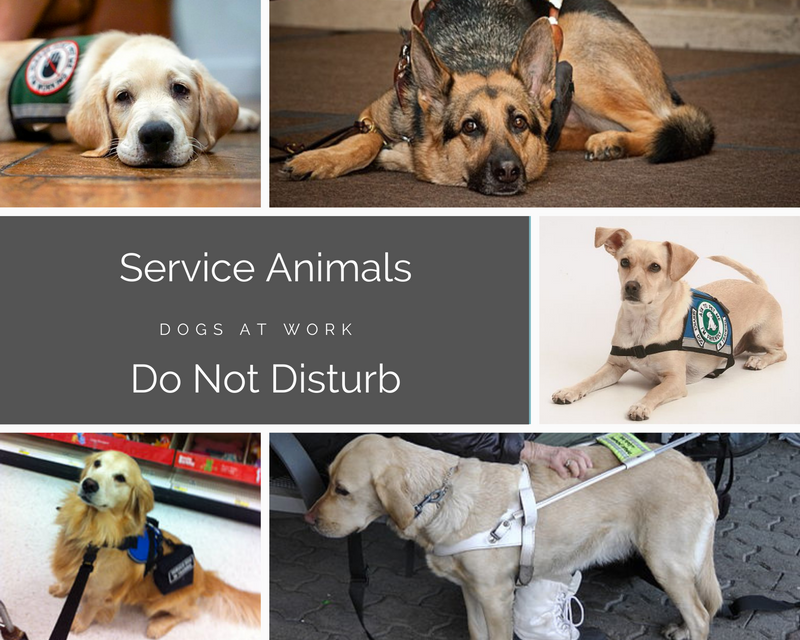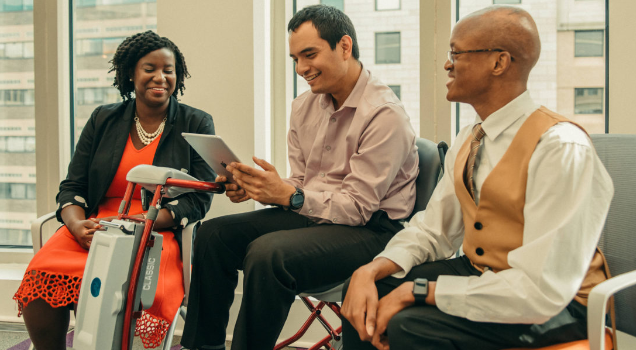
This logo isn't an ad or affiliate link. It's an organization that shares in our mission, and empowered the authors to share their insights in Byte form.
Rumie vets Bytes for compliance with our
Standards.
The organization is responsible for the completeness and reliability of the content.
Learn more
about how Rumie works with partners.

For able-bodied people, it can be hard to know how to act around someone with a disability. However, there's no reason to feel awkward or uncertain.
Keep these tips in mind for successful interactions when you work, live, or socialize with people who have disabilities.
Emphasize The Person
Treat the person with respect.
The DO's:
Treat them like a person.
Make eye contact.
If the person is in a wheelchair, consider sitting down to make communication easier.
 Disabled and Here CC BY 4.0
Disabled and Here CC BY 4.0
The DON'Ts
Don't speak to them as if they are children.
Adults with disabilities are adults. They vote, sign documents, date, marry, and navigate life in much the same way as those without disabilities.
Don't use hero language.
Never say, “You inspire me!" or "You're so brave."
Don't ask intrusive questions.
Don't ask a casual or new acquaintance what happened to them or how they became disabled unless you have a reason other than curiosity.
In the clip below from ODR Disability Sensitivity Training, a group of people with a variety of disabilities speaks for themselves about how they expect to be treated.
Use Person-first Language
Most people with disabilities prefer person-first language.
Emphasize the individual rather than the disability.
Emphasize abilities and not limitations, and avoid language suggesting the person is lacking.
For example, say "a person using a cane," "a person with an emotional disability," or "a person with Cystic Fibrosis."
Some exceptions to the person-first guideline might include the deaf community and autistic people.
However, remember that each person may have a different preference, and you should respect and honor their preference.
Did you know?
This Byte was created by a volunteer professional that wanted to share this insight to help you succeed - no agenda, no cost.
Avoid Making Assumptions
Don't assume that:
You should shout for the person to hear you.
You know what the person feels or wants or what is best for them.
They don’t shake hands even if they have limited use of their hands or an artificial limb.
Assume you have offended a person if you accidentally say:
"See you later" to a person who is blind, or
"I have to run" to a person using a wheelchair.
It happens! Don’t emphasize it by apologizing repeatedly.
Speak Directly To The Person

A person with a disability may be assisted by an aide, companion, or interpreter. You should focus your attention on the person with the disability when trying to communicate with them.
Even though the deaf person will be looking at the sign language interpreter, you should look at the individual and not at the interpreter.
Be sure as well to avoid talking to them or about them through their companion or aide.
Tips For Communicating And Interacting
With a Person who is Hard of Hearing
Don't shout. There are hearing-impaired people who can read lips or who read sign language.
If a person indicates that they're not hearing you, it may then be appropriate to speak up.
If they indicate that they read lips, try to face them and refrain from turning away or blocking your face with your hands or an object you're holding.
With a Person who is Blind
Announce yourself when you enter a room and when you leave.
Don't grab them by the arm. If they accept your offer of assistance, let them take your arm.
Don't touch their cane or service animal.
With a Person with an Intellectual Impairment
Don't raise your voice but do consider speaking more slowly.
Be prepared to repeat yourself as needed.
With a Person with a Communication Impairment
Listen and don't interrupt.
Ask them to repeat themselves as needed.
Don't pretend to understand them when you don't.
Ask Before Trying To Help
You can offer assistance, but don't help without asking first.
If the person agrees to your offer of help, ask "How can I best help you?"
Let them direct you instead of grabbing for their arm, wheelchair, or other assistive device. You should never touch an assistive device without permission.
Quiz
Your neighbor, Cynthia, uses a wheelchair. When is it okay to touch her wheelchair?
Never touch a wheelchair or other assistive device without permission. Even if Cynthia appears to need assistance, you must ask her first. Once she agrees, you can provide the help she requests.
Service Animals
 Clockwise from top left corner (All images were cropped and combined in collage format): Service Dog by Jami430 / CC BY-SA 4.0; Service Dog from flickr / CC BY 2.0; Samivest by Crjs452 / CC BY-SA 3.0; Service Dog by PersianDutchNetwork / CC BY-SA 3.0; Service Dog by http://www.pawsitivityservicedogs.com / CC BY-SA 4.0C
Clockwise from top left corner (All images were cropped and combined in collage format): Service Dog by Jami430 / CC BY-SA 4.0; Service Dog from flickr / CC BY 2.0; Samivest by Crjs452 / CC BY-SA 3.0; Service Dog by PersianDutchNetwork / CC BY-SA 3.0; Service Dog by http://www.pawsitivityservicedogs.com / CC BY-SA 4.0C
Never touch a service animal.
These animals are working even when they appear to be resting.
Don't pet them or distract them.
Service animals assist people who are blind and many others. Service animals may be monitoring the person their owner for a seizure or dizzy spell. By distracting them, you could be putting their owner in danger.
Quiz
On your way to lunch, you spot a man walking the cutest dog. As you get closer, you realize the dog is wearing a service animal vest. When can you stop and pet the animal?
Never pet the animal without permission. Don't expect to get permission. Understand that petting the animal would distract it from its job.
Take Action
 Image by J. Nicholson for Disability:IN CC BY 4.0-No derivatives.
Image by J. Nicholson for Disability:IN CC BY 4.0-No derivatives.
The goal is simple: treat individuals with disabilities with respect. As you learned in the video above, the key is to "treat us the way you would want to be treated."
This Byte has been authored by
Juli Heaton
Attorney and Learning Designer